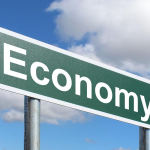Although different in goals since their inception, the Association of Southeast Asian Nations and the European Union have always been compared to one another in discussions.
Of course, it would be inevitable that investors will talk about the possible of a unified Asian currency for ASEAN, same as what happened to the European Union with the EU. Would such a shift be possible?
Well, the better question to ask is – would such a system work for a diverse economic ecology such as what is found in ASEAN? To answer that, it would be best to first look at the advantages and then the drawbacks of a unified currency.
Pros
Let us look at the advantages of having a unified currency first. Here are some of those pros that proponents of a single Asian currency are rallying behind:
- A single Asian currency can help encourage free flow of cash, resources, goods and labor
Without the uncertainty and the complexities associated with currency exchanges, international trade between the ASEAN nations can potentially be free flowing. With the elimination or, at the least, reduction of tariffs between member states, a single currency can help trade flourish. - Trade competition can be encouraged because of price transparency
Currency exchanges can result to confusion as to the actual price of the transaction, thereby discouraging businesses from international trade. With a single currency, however, the playing field is leveled out, thus encouraging increased trade that can directly benefit the unified economy.
Now, let’s move on to the disadvantages. What do opponents of a unified Asian currency are saying about this side of the coin?
Drawbacks of a Single and Unified Asian Currency
Here are some of the disadvantages that opponents are citing as reasons why a unified Asian currency should not be introduced in the first place:
- Uneven economic load between the member nations
According to the opponents, and also of course supported by evidence, there will always be economic differences between countries. When a unified currency is introduced, there will be discrepancies in economic loads between each country in supporting the currency. This could result to stronger states forced to support economically weaker nations in the partnership. - Instead of equalizing, a unified monetary policy could adversely affect member states
Because of the disparity in economic capabilities, a unified policy can actually have unequal effects on member states. An increase in interest rates may economically benefit one country, but negatively impact the other. - There are plenty of roadblocks in the implementation of a singular monetary policy in any region
Finally, opponents are pointing out that there is a sheer amount of effort needed in order to iron out the details required in implementing a singular monetary policy.This could become costly for all states involved, although proponents are quick to point out that this would only be for the short term.
In reality, it would take a significant amount of time and not a few years of discussion and negotiations between ASEAN’s member nations before a unified monetary policy can be arrived. Much of these would be dictated by ongoing geopolitical upheavals and developments in the area, including the rise of China and the trade war with the United States.
If you however, wanted to stay at the forefront of the game, as a businessman, and wanted to stay in one of the most progressive Asean nation-Thailand, don’t hesitate to contact us.






